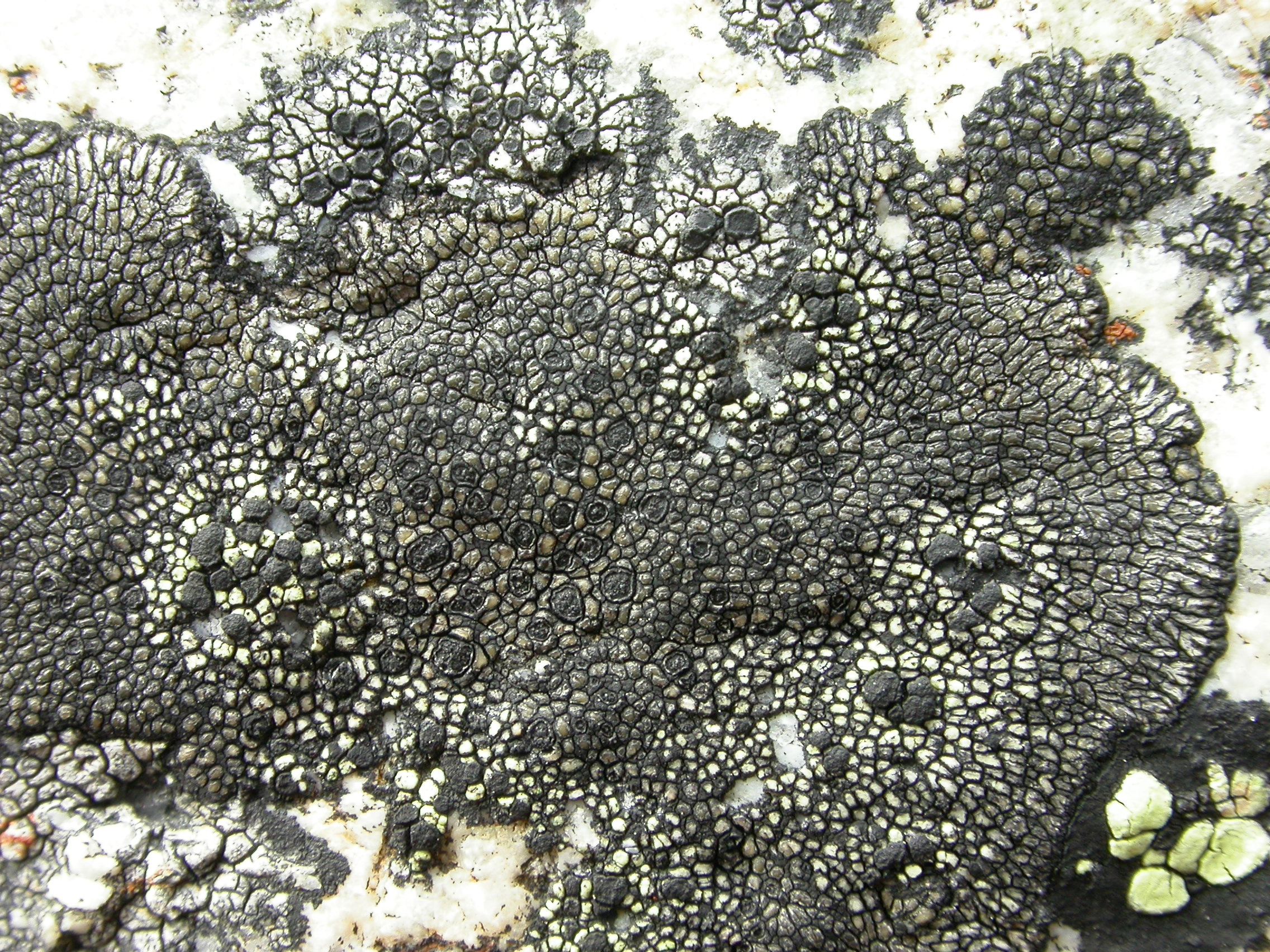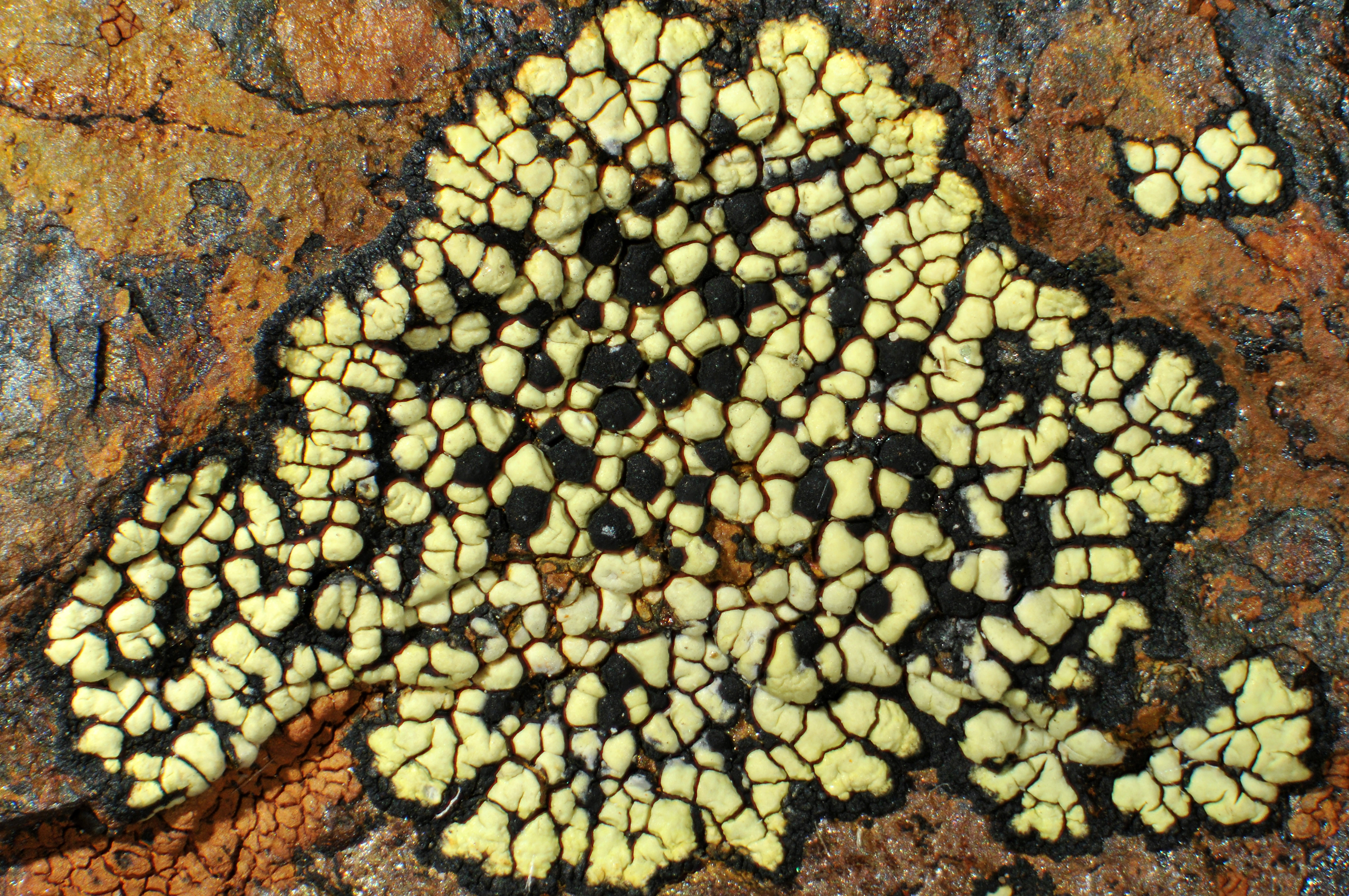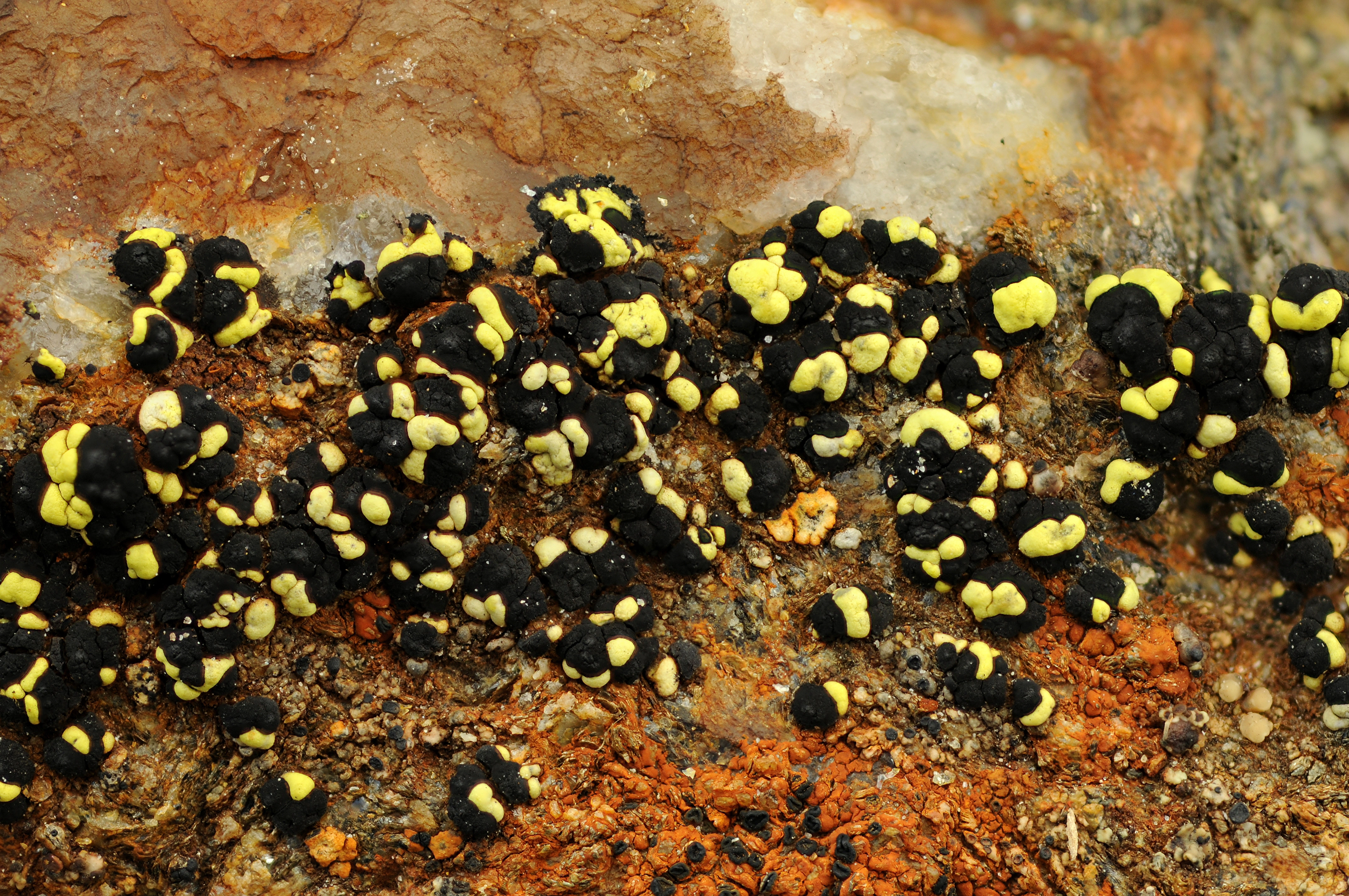Rhizocarpon pusillum
- Innhold
- Morphology
- Chemistry
- Habitat
- Comment
- Look-alikes
Morphology
Thallus areolate, usually up to 1 cm diam., growing in the thallus of Sporastatia testudinea; hypothallus indistinct or absent; areolae up to 0.5 mm diam., bright yellow, dull to shiny, contiguous, orbicular to angular, plane to moderately convex, smooth; medulla KI–. – Apothecia up to 0.7 mm diam., black, epruinose, orbicular to angular, plane to weakly convex, indistinctly marginate; excipulum brownish black in the rim, paler in the inner part, K+ faintly red; hypothecium dark brown, K–; hymenium colourless to pale brown; epihymenium brownish black, K+ faintly red; no crystals or granules in the apothecia; ascospores 8 per ascus, 1-septate, dark brown, 9–14 × 4–6 µm. – Conidiomata not seen.
Chemistry
Rhizocarpic and psoromic acid; spot tests: medulla PD+ yellow, K–, C–.
Habitat
Growing in the thallus of Sporastatia testudinea on exposed rock faces in the mountains.
Comment
A characteristic species due to the obligate host relationship. The other small-spored, bright yellow, parasitic species (Rhizocarpon effiguratum, R. intermediellum, R. norvegicum, and R. parvum) have a deeply amyloid medulla. The species is sparingly collected but quite common.




